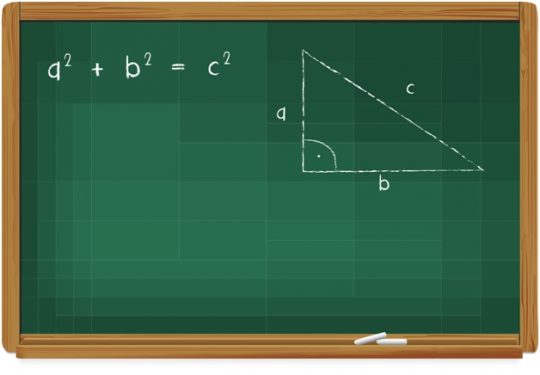Most of us are looking at at least a month of having our kids out of school. These teacher created resources can help your child stay on track.

More thought, pedagogy, and research has gone into considering how to teach math than any other subject. Language arts is a close second, but there’s something about the interplay of numbers that one either gets; or doesn’t.
In the classroom, a wide array of teacher created resources ae used to help shape the concepts and drive home ideas. With the recent school closures, these resources are missing for some students.
Fortunately, you can access many tools and learning aides online. The following guide provides a useful breakdown of what each resource is, how to access it, and how it can help.
You’re certainly not limited to the approaches you try at home. Whatever works, works. So get reading and find what you need now.
Teacher Created Resources
These resources provide avenues to explore techniques and to help expand learning. They all, in their way, reach toward the same objective: teaching math.
One of the larger difficulties with math is, no matter how one approaches it, the answers don’t change. The methods and the meta, how you think about the problems, shifts from one methodology to another. The answers don’t change because math, unlike so many other disciplines, doesn’t have the wiggle room of interpretation in the end.
This quality of math is one reason that people face math anxiety. They lock up when trying to learn because they feel that there are no options. It’s difficult to think in specific linear patterns.
Working with these resources teaches a student to consider other ways to get to the answer to avoid that tension.
1. US Department of Education
A collection of resources to guide learning through grade 5. Their site provides a wealth of activities broken down by topic, a glossary, and links to further resources.
The site aims to give students a faster start in the formative years. It works best for teaching fundamentals and helping work on the core underlying numbers.
Even if you are at home with older students, it can give parents a solid look into how some of the teachings in math has been conducted lately. The gap between what a parent knows and how a parent was taught can be enormous.
Catching up on the design of modern mathematic teaching gives you a touchstone for fully utilizing other sources.
2. The Common Core Toolbox
Speaking of getting a foot in the door of new teachings, if you can’t make sense of what Common Core is and its approach to math, start here.
The biggest benefit from this is getting more information on the objectives and learning goals set out for each grade K-12 in mathematics.
While the techniques and methods used to arrive at an answer matter, if you understand where the teaching is headed, you can bring in more of your own experience.
Consider the benefits of letting your child teach you the new methods. This reinforces their information and gives you a window into their thought processes. Try not to be resistant to the new methods as this can create confusion and frustration for your students.
3. Advanced Curriculums
Some children aren’t looking for help getting to the bar, they need to be stimulated and challenged.
Don’t let that spark and talent go to waste.
These types of sites provide expanded problem-solving skills and training. The materials are easy to use, scale with learning levels and are affordable.
If you’re looking to get ahead now (for the summer months), consider picking up a course yourself. Walking a few miles in the student’s shoes gives you tools for explaining and assisting with the material.
4. Mathematics Assessment Project
This tool was designed to work a lot like a practice test. It gives students an idea of where they stand in regards to the current assessment standards.
Once a benchmark is derived, the site offers an assortment of lessons and development ideas. These help educators to expand their own lesson plans to catch students working outside the mean.
It’s perfect for finding new avenues to guide your temporary home-schoolers. It’s presented as part of the MARS (Mathematics Assessment Resource Service) which is also a fun acronym.
5. Edutopia
This site provides learning resources centered around blogs and videos with further tips. It’s an ever branching set off resource exploration.
The articles are well-written, educational, and filled with things to try in the classroom i.e. your home.
You can search by topic and by author (if you hit upon a favorite). It’s a broad resource, so it won’t take much time to find what you’re looking for. Try a few of the most popular articles and then go searching for further supplementals if you find a technique or practice helpful.
6. Math Open Reference
For more visual mathematics teachings you need a resource with visuals and explanations. To create interesting visuals, use PowerPoint templates education as this will help explain a particular topic and communicate effectively and easily with students. This reference site includes help for the trickier portions of Coordinate and Solid GEaomtery, Trigonometry, and Plane Geometry.
The site emphasizes problem-solving over strict rules. By offering a deconstruction of a problem, rather than a route to a solution, the site shows the journey.
You’ll find workable videos and walkthroughs in addition to illustrations and guides. There’s a section for puzzles and games which create an engrossing learning experience.
7. RealWorldMath
Some educators became frustrated with the stricture of theory and the ephemeral nature of numbers. To combat what they saw as too much impracticability, they created this site of dynamic tools for grounding math.
In it, you will find online learning aides related to real events and places. Calculate distances to real locations. Work with trajectories and geometry attached to photos of landmarks.
The projects are interactive, allowing a free exploration, but they also provide feedback so you can check the answers and understand the background of the problems presented.
Crunch It!
It’s going to be a bit before things go back to normal in the teaching and schooling worlds. In the meantime, learning to find and harness teacher created resources can smooth things out for you. The bonus here, knowing what to look for in supplementary materials will help you at home when school resumes.
For more articles about working with kids, lifestyle tips, and more come right back here.



























































